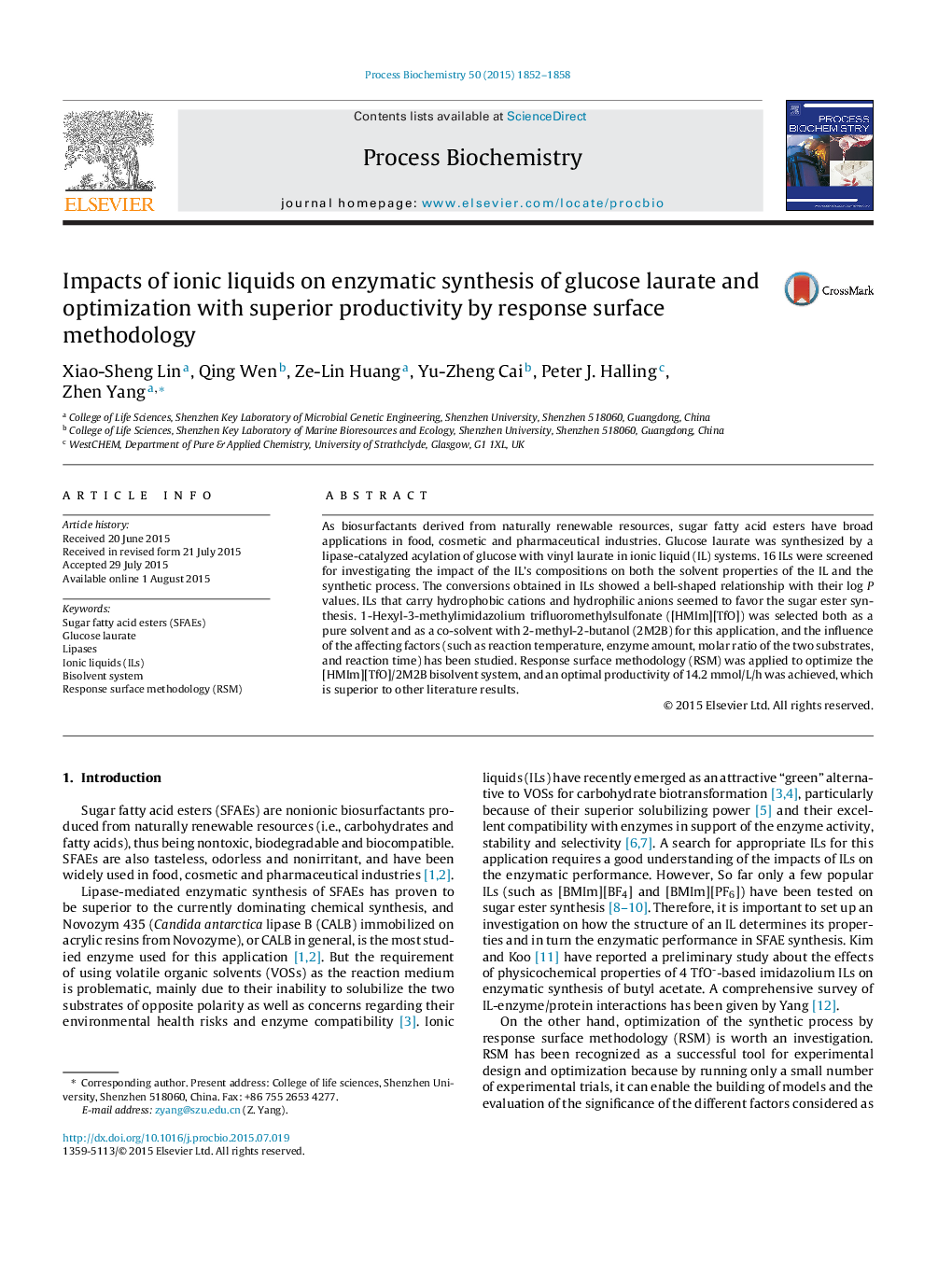| کد مقاله | کد نشریه | سال انتشار | مقاله انگلیسی | نسخه تمام متن |
|---|---|---|---|---|
| 34285 | 45016 | 2015 | 7 صفحه PDF | دانلود رایگان |
• 16 ILs were screened as solvents for enzymatic synthesis of glucose laurate (GL).
• Impact of IL structure and properties on enzymatic conversion was examined.
• Enzymatic synthesis of GL in pure IL and IL/VOS bisolvent systems was investigated.
• Optimization of the bisolvent system by RSM yielded a superior productivity.
As biosurfactants derived from naturally renewable resources, sugar fatty acid esters have broad applications in food, cosmetic and pharmaceutical industries. Glucose laurate was synthesized by a lipase-catalyzed acylation of glucose with vinyl laurate in ionic liquid (IL) systems. 16 ILs were screened for investigating the impact of the IL’s compositions on both the solvent properties of the IL and the synthetic process. The conversions obtained in ILs showed a bell-shaped relationship with their log P values. ILs that carry hydrophobic cations and hydrophilic anions seemed to favor the sugar ester synthesis. 1-Hexyl-3-methylimidazolium trifluoromethylsulfonate ([HMIm][TfO]) was selected both as a pure solvent and as a co-solvent with 2-methyl-2-butanol (2M2B) for this application, and the influence of the affecting factors (such as reaction temperature, enzyme amount, molar ratio of the two substrates, and reaction time) has been studied. Response surface methodology (RSM) was applied to optimize the [HMIm][TfO]/2M2B bisolvent system, and an optimal productivity of 14.2 mmol/L/h was achieved, which is superior to other literature results.
Figure optionsDownload as PowerPoint slide
Journal: Process Biochemistry - Volume 50, Issue 11, November 2015, Pages 1852–1858
